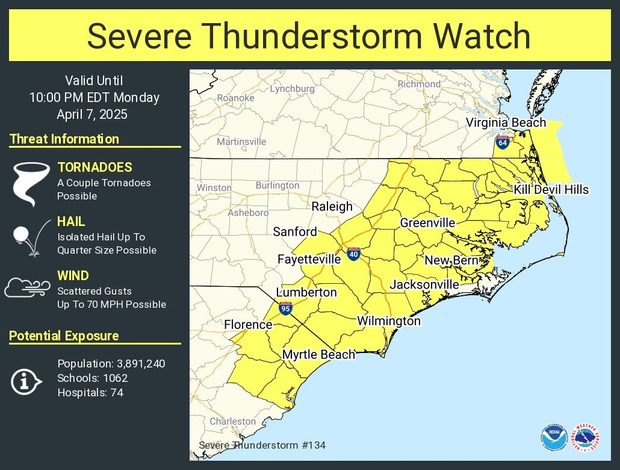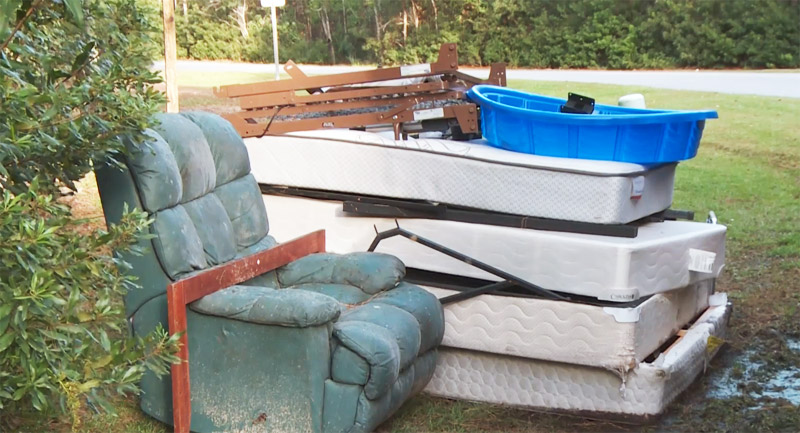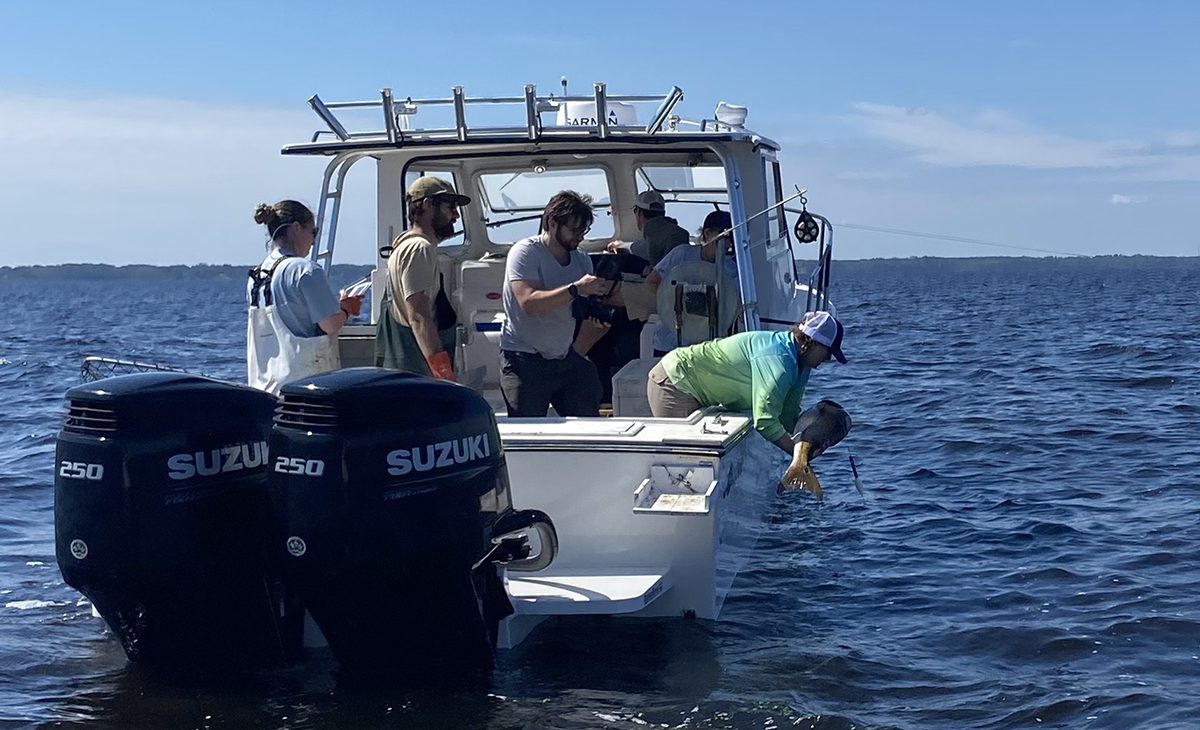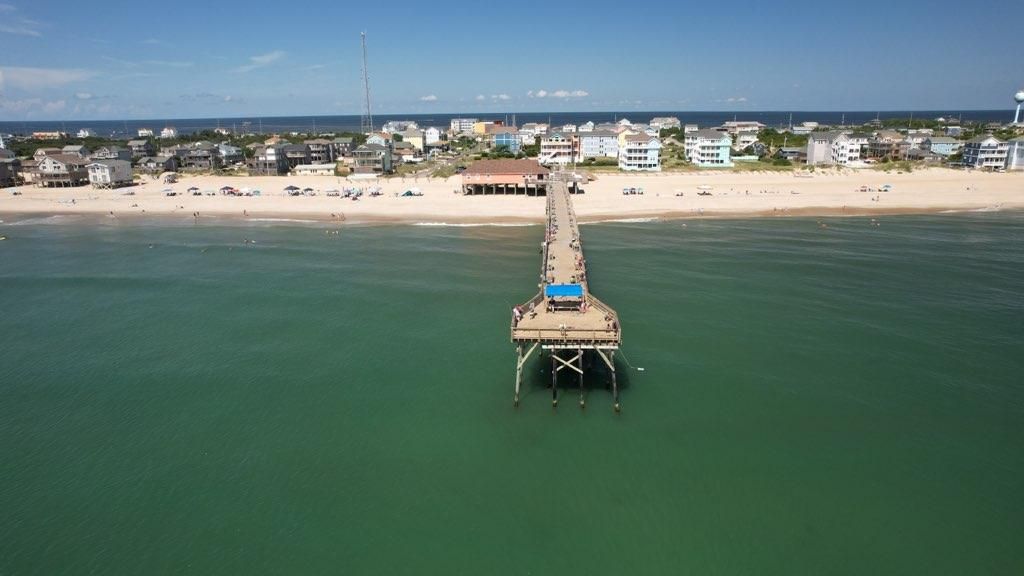Outer Banks Angling: Striped gold…WITH VIDEO
Anyone who was around the Outer Banks from the turn of the century through 2008 would have seen an absolute melee every winter. Anglers came from all around to join the local crowd to chase striped bass.
The fishery was hot and so was the winter money that came with it. Rental companies, motels, restaurants, tackle shops, charter boats and others were making some extra coin during the off-season by catering to the many anglers who came to catch these fish.
Striped bass can grow to more than 50 pounds, they put up a decent fight, and they are top-notch table fare.
The striped bass fishing was at its best when we saw ocean schools pushing down from the north. These fish were absolutely awesome entertainment for local fishermen suffering from winter doldrums and cabin fever.
I know because I was one of the local anglers who looked forward to striper season, and I even co-hosted a 300-person, surf-fishing striper tournament along with a good friend for five years.
Striped bass, also known as striper or rock fish, would cause quite a stir amongst boaters and surf fishermen. During the good years, finding striped bass wasn’t very difficult in January and the beginning of February. All you had to do was look for diving birds or large schools of menhaden and more times than not, you found stripers.
But, for the past several years, the striped bass fishery has been all but nonexistent, though the fish made a brief showing in the winter of 2011.
Anglers began to complain and throw around theories about what happened to this incredible fishery. In many cases, each theory held a little weight.
So, when I was asked if I’d be interested in going out to catch and tag stripers with the North Carolina Division of Marine Fisheries (NCDMF), I jumped at it.
Now, there are a couple political points about this outing that I am going to get out of the way up front.
The tagging we did actually ended up happening in Virginia waters, and we left from a Virginia port on a Virginia-based boat.
Why would this be the case for the NCDMF, which is using North Carolina state grants to pay for the program?
Well, there was a large school of coastal stripers off of Virginia, and these guys, like most businesses, are trying to get the best bang for the buck. The more stripers they tag, then the better chance of information return they have. It was nothing personal – it was just business.
All the fish we caught were well over the 3-mile line offshore. Federal law states that stripers cannot be targeted over the 3-mile line.
While I was with DMF officials whose daily job is tagging fish of all species, they were still forced to obtain three different permits to target these fish. All the boats and captains they planned to use for the program had a thorough background check and could not have any type of fishing violation to participate.
It’s kind of a big deal.
The grant money, which is coming from the sale of North Carolina fishing licenses, allows for 10 of these trips. I was fortunate enough to fish two of them, along with my stepson.
The first day we fished we caught and tagged 158 fish up to roughly 58 pounds, and the second day we fished, we caught 264 fish up to roughly 68 pounds. There were some big schools of fish in the open water that had some really big fish in them.
I hadn’t seen anything like this in years and my stepson, Braxton, had never seen anything like it in his life.
Both days were sunny and pleasant to be winter fishing. Both days we put in some serious work – leaving at dawn and returning at dusk.
The guys heading this project have their act together and have quite the system for getting the job done.
Charlton Godwin, a biologist with NCDMF and who specializes in striped bass research, led this endeavor. Captain Ryan Rogers of the Midnight Sun was tasked with finding the fish. Using radar and other state-of-the-art equipment, he managed to do so both the days I fished.
The radar can be used to pick up on large groups of birds, which can be a sign of bait and striper activity.
Ryan’s boat is a 50-footer and has lots of open deck space, along with a 12-pack license, which given the task, is much needed. This type of license allows for plenty of people to be on the boat.
Many hands go into this deal.
When you are catching more than 100 or 200 fish a day and trying to tag them, there is a lot going on. For most, this type of fishing wouldn’t be fun. We used some semi-heavy trolling gear. Most anglers prefer to use light, jigging or casting tackle for these fish.
The bigger gear served a few purposes.
It allowed for the trolling to be set up to catch up to two stripers per rod, which meant more fish could be caught.
The heavier gear also meant we could get the fish into the boat faster, which also allowed for more fish and less stress on the fish. Less fight equates to less stress on the fish, which lessens the mortality rate.
Contrary to belief, there is a mortality rate on catching and releasing striper, but, in many cases, the fish doesn’t die until days after. And, the warmer the water, the higher the mortality rate, so catching and releasing in colder water is much better.
Charlton and his crew had brought along their own live well, which could store fish briefly, when a lot were coming into the boat rapidly.
No matter what, all the fish were measured and tagged, while some randomly had samples of their scales pulled to be used for aging at a later date. The scales can be put under a microscope and a semi-accurate age can be determined.
The best way to age a fish is by using its inner ear, also known as the otoliths, but that’s not an option for catching and releasing.
The largest of the fish were always measured, tagged, weighed and had scales taken.
You can imagine the organized chaos of having five to six rods go off at one time (half of them being doubled up with fish) and then trying to get those fish in the boat, in a live well, gather information, and get the fish back into the water as quickly as possible.
At times, it was game-on for two or three hours straight. Having a boat with a large carry capacity was nice, but, in this case, it was an absolute necessity to have so many people on board.
While the mate, Doug Gray, was getting help from another DMF official, Joey, who was highly efficient at mating and could hold his ground with a pro any day, I am pretty sure that Doug had an IV of Red Bull hidden in the front of the boat that he hooked up to every chance he got. The man was a machine.
Doug and Joey had their job set forth, while Charlton manned the measuring board and live well.
Charlton would take a scapula to make a tiny incision in the body of the fish, prior to inserting the tag. One could tell he had done this a few times before, as he was very efficient at it.
The rest of us took turns fighting fish, writing down info hollered out nonstop by Charlton, or helping wrangle the stripers on the measuring board and releasing them.
Captain Ryan would leave the helm when he could to race back and assist in any way he could.
It was a melee of organized chaos. It was also some of the most fun I’ve had in a while on a boat. Don’t get me wrong. I always have fun, no matter the fish I am chasing or catching — or not catching for that matter. But, it was fun to catch fish like this for the first time, in a long time, while learning so much and sharing it with Braxton.
Stripers grow an average of 6 inches per year. Most females between 14 and 18 inches have begun breeding, with nearly 100 percent of females having bred by 24 inches, along with most females that size having pushed out of the inshore waters to the coastal waters.
This means that most of the stripers that are caught along the coast are breeding females.
Many factors have played into the downturn in numbers.
Water quality and pollution have played heavily into the lower stocks. If the back waters that the fish are trying to breed in is polluted, then the actual numbers of spawns will be low.
If heavy rains hit during spawning season, it can lead to low spawns by dropping the oxygen in those areas or destroying the eggs.
The commercial and recreational harvests have played heavily into the decline.
That statement alone is open for serious political debate, and I am not going into either side of it, as that’s not the purpose of this column. But I will reiterate that both types of fishing have had a part in the decline.
Charlton really summed it up best by saying that anglers have tried to compare recent years to those really good ones in the past. But, those really good years were due, in part, to incredible spawns years prior.
Comparing them is like comparing apples to vinegar.
By the end of trip number 10, Charlton and his gang had tagged 1,042 stripers. That will hopefully equate to a lot of future data.
The most fish that these guys have caught in one day during their three years of doing this was last year when they tagged 288 of them. The largest fish came in last year and weighed roughly 78 pounds.
Thus far, the tag that came from the most distant point was from off the coast of Canada.
There are eight active striped bass tagging programs from North Carolina to Massachusetts. These programs help to determine how these fish migrate and in what areas they are breeding and what areas are contributing to the stocks.
There is a lot to be learned here. These individuals are not trying to take away anyone’s fishing.
From everything I saw, these fellas and ladies very much enjoyed fishing, and we all cracked about how nice it would be if we could take one home to eat.
These researchers are just trying to learn how to make the fishing better, and I applaud them for it.
I wish these large schools of coastal stripers would show up off our coast, so that the tagging and business of the trips could stay on the Outer Banks, but those are the breaks sometimes.
Charlton said there had been a couple decent spawning seasons in the recent past and that, in theory, we could see some good inshore striper fishing in the years to come.
I am glad that some of my money from purchasing my fishing license is used for programs like this. I hope the research continues and I hope we see the stripers again.
Go fishing and play hard.
(Rob Alderman has lived on the Outer Banks for more than 13 years and has worked in the recreational fishing industry the entire time. A former variety fishing TV show host, beach fishing guide, tackle shop and pier employee, Rob currently owns and operates Outer Banks Kayak Fishing. He is on the Pro-Staff of Bending Branches LLC, Wilderness Systems Kayaks, Release Reels, Yakattack and is an ambassador for Ugly Stik. You can follow his adventures at www.FishMilitia.com or OuterBanksKayakFishing.com.)








